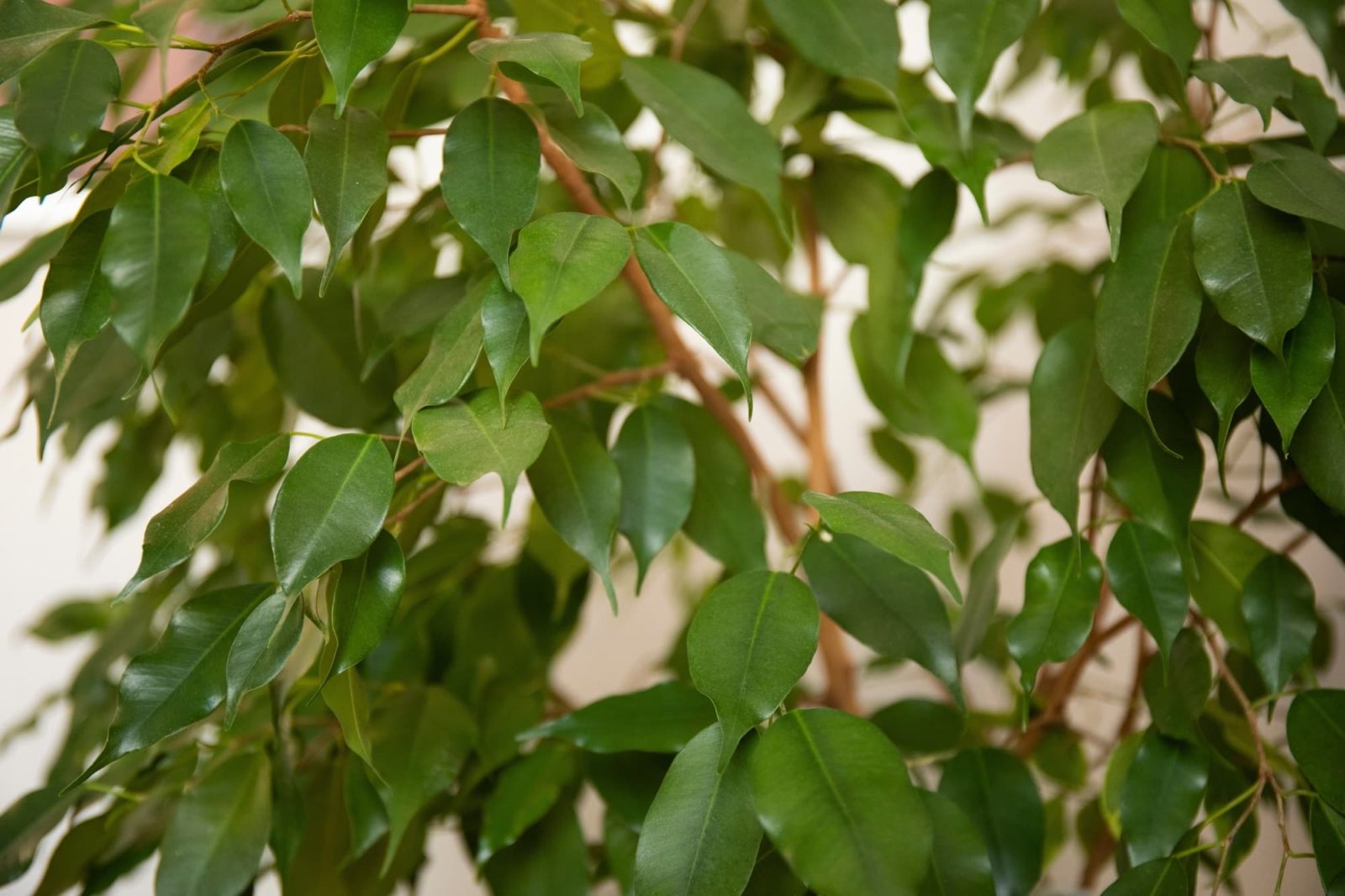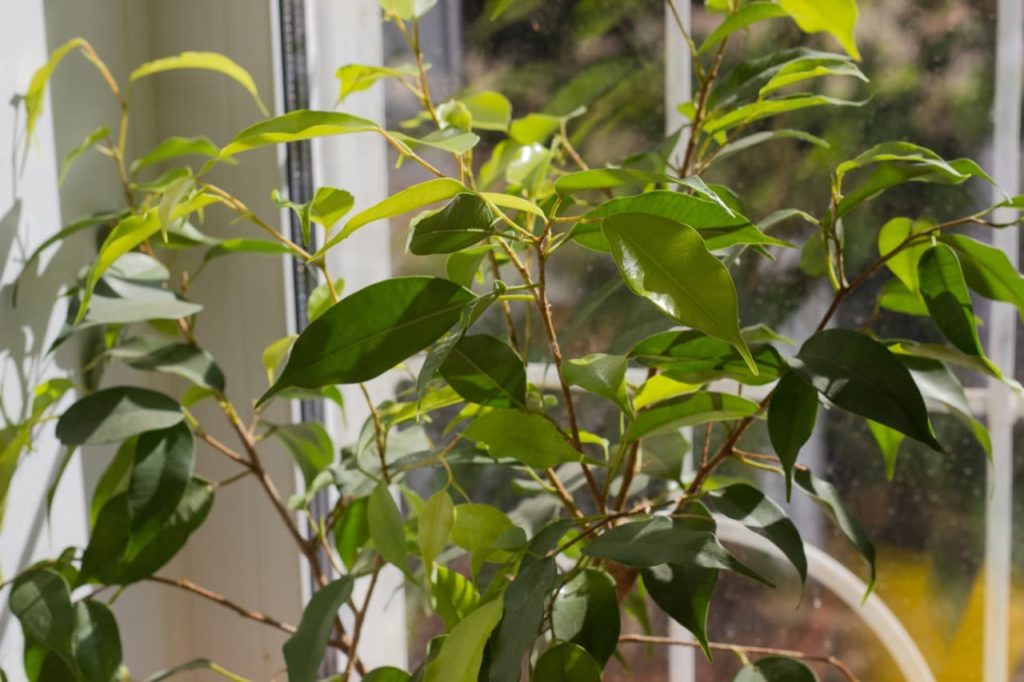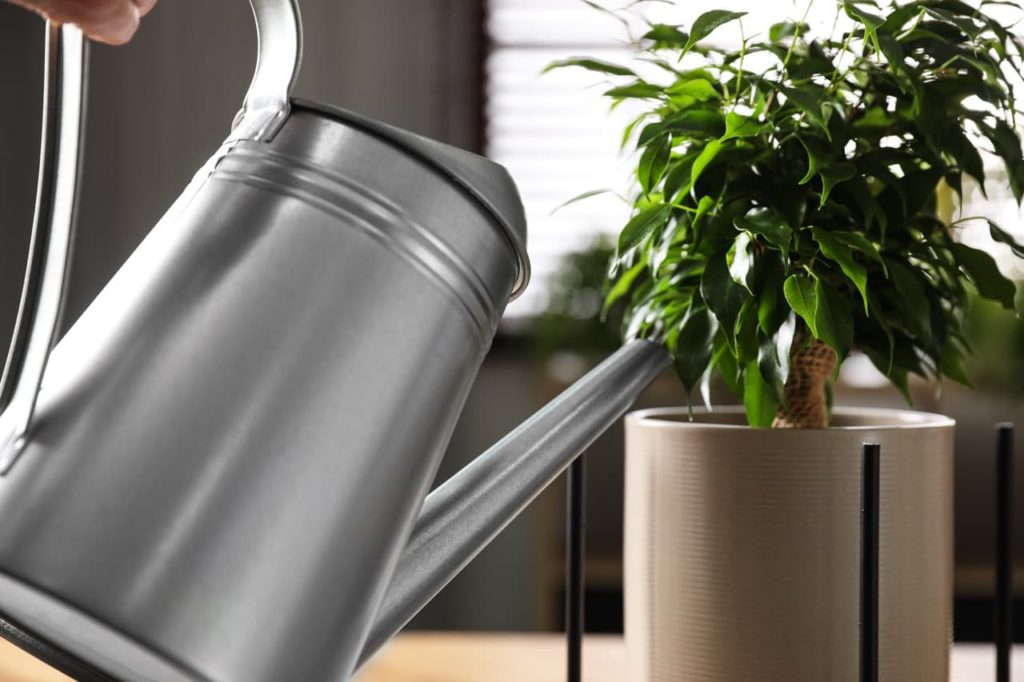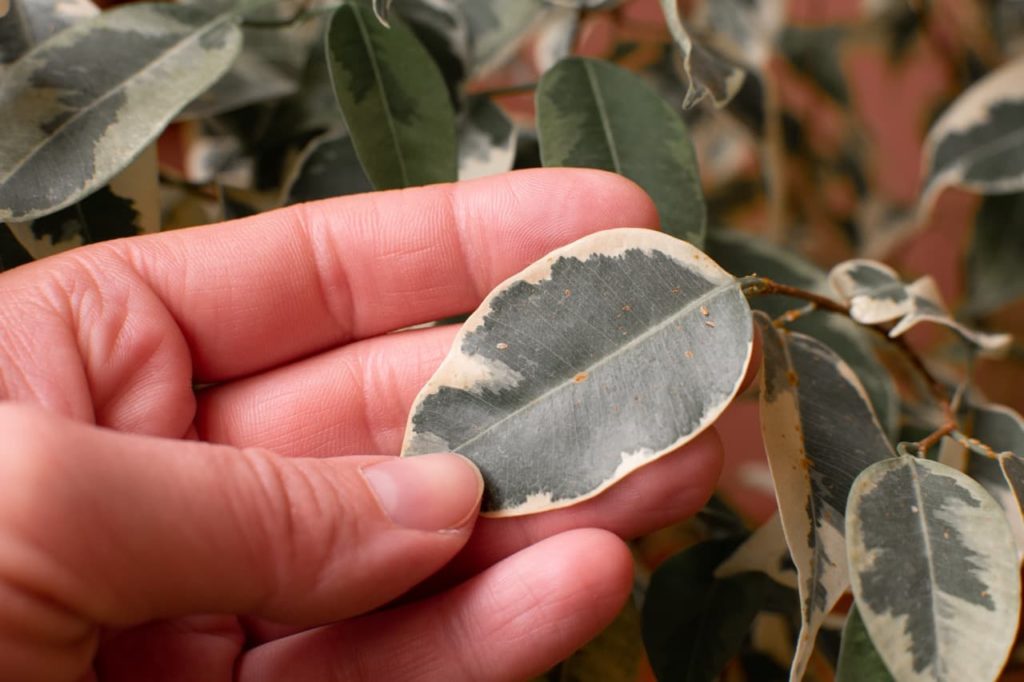Unhappy Ficus Plant? Here Are 5 Reasons For Drooping Or Yellowing Leaves

HOUSEPLANTS > FICUS > BENJAMINA > DROOPING

Elizabeth is a Permaculture Garden Designer, Sustainability Consultant and Professional Writer, working as an advocate for positive change. She graduated from the University of St. Andrews with an MA in English and Philosophy and obtained a Diploma in Applied Permaculture Design from the Permaculture Association.
Reviewed By MOLLIE BROWN
IN THIS GUIDE
FICUS GUIDES
Ficus Benjamina
– Drooping Leaves
Fiddle Leaf Fig
Rubber Plant
Ficus benjamina can be a beautifully elegant and relatively easy houseplant to grow.
However, it can be fussy if the basics are not in place and it is not cared for correctly. And in my experience, it is quick to let you know when it is not happy.
A wide range of different stressors can cause leaves to turn yellow and drop off.
Some of the most likely causes of drooping or yellowing leaves on a Ficus bejamina are:
- A lack of light or sudden changes in the amount of light.
- Temperatures that are too high or too low.
- Changes to the environment or root disturbance.
- Overwatering or waterlogging. Underwatering during warmer months can also be a common cause.
- Pest problems like mealybugs or scale.
We share more insight into each of these problems and solutions for each below.
1) A Lack Of Light
The first reason that a weeping fig might start dropping its leaves is that it is located in too dim or shaded a location.
These are plants that require bright but indirect light within a home. They cannot thrive in a very dark situation.

These plants are also prone to experiencing stress when there is a sudden change in the environmental conditions.
A change in the light levels is one change that can spark off stress in the weeping fig plant.
2) Temperature Issues
Sudden changes in temperatures can also cause leaves on a weeping fig to fall.
Temperatures that fluctuate too extremely, those that are too high and that are too low can all cause stress and lead to this problem.
Careful placement of a weeping fig in the first place is very important.
You need to choose a location that is not in a draught or too close to a heat source such as an oven, stove or radiator.

These houseplants need temperatures to remain consistently at around 16°C and will suffer if the temperatures fluctuate much from this.
The temperatures should remain above 13°C, even through the winter months and will usually die if temperatures drop below 10°C.
3) Environment Changes Or Root Disturbance
Weeping figs can be low-maintenance when they are in the right place with the right conditions, but it is important to remember that they are intolerant of changes.
When first potted up into a new container or when repotted, they can lose some of their leaves due to the stress.
They may settle down over time as long as the conditions they require have been provided, but you should always take care to disturb or move one of these houseplants as little as possible.
4) Overwatering Or Waterlogging
Sometimes, leaf fall or yellowing leaves on a weeping fig plant may be due to a problem with excessive watering or poor drainage.

These plants require a growing medium that is moist yet free-draining.
The top few centimetres of the growing medium should feel dry before you water it once more and when watering, excess water should always be allowed to drain away freely.
Yellowing leaves and leaf drop can be a sign of overwatering or waterlogging and potentially indicate a problem with root rot if this issue has been allowed to persist.
If you feel as though you may have been neglecting the regular watering schedule required for a Ficus, this may also be the cause – especially if the plant is showing these signs during warmer months.
5) Pest Problems
Since dropping leaves on a Weeping Fig are typically a sign of stress of some kind, this problem can also be caused by a pest infestation.
When growing indoors, these plants can be plagued by many common houseplant pests, such as mealybugs, scale insects or red spider mites.

Severe infestations can sometimes lead to defoliation.
While there are other issues that can potentially cause both leaf drop and yellowing leaves on a Ficus benjamina, ruling out the above is typically the best place to begin when trying to solve the problem.
Often, with the root cause removed or remedied, the plant will be able to recover.

